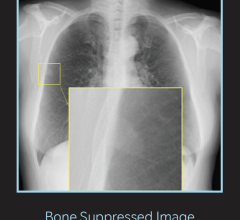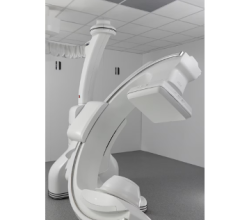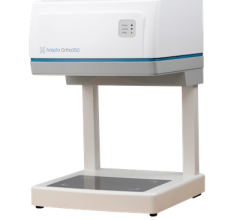December 2, 2013 — The Radiological Society of North America (RSNA) annually invites eminent researchers and leaders to deliver honored lectures during the Radiological Society of North America Annual Meeting (RSNA 2013). RSNA 2013 will feature honored lectures by these esteemed leaders: Damian Dupuy, M.D., Irving Weissman, M.D., Condoleezza Rice, Ph.D., Paul Harari, M.D., David Jaffray, Ph.D., and James Deye, Ph.D.
Annual Oration in Diagnostic Radiology: Sunday, Dec. 1
Radiology and interventional oncology share a strong focus on cancer detection and staging, locoregional therapy and follow-up. Despite their mutual goals and complementary skill sets, however, many radiology and radiation oncology departments struggle to be autonomous and at times compete for hospital resources and patients. In the new healthcare paradigm of evidence-based medicine, a cohesive team approach to cancer care makes the most economic sense, said Dupuy, who encourages deeper collaboration between these departments, given the shared interests and synergy between their treatments.
Dupuy is the director of tumor ablation at Rhode Island Hospital and a professor of diagnostic imaging at the Warren Alpert Medical School, Brown University. Internationally recognized for his clinical expertise, teaching and research in image-guided ablation, Dupuy has helped broaden clinical applications to successfully combat adrenal cancer and cancers of the kidney, liver, lung, skeleton, head and neck. He pioneered technologies such as percutaneous microwave ablation, cryoablation and combination therapies using radiofrequency ablation with external radiation or brachytherapy. In addition, he has been the principal investigator of two National Cancer Institute-funded multicenter trials.
Dupuy chairs the Interventional Oncology Symposium at the RSNA Annual Meeting and is a member of RSNA's Public Information Advisors Network (PIAN).
Eugene Pendergrass New Horizons lecture: Monday, Dec. 2
Research that bears on the earliest stages of cancer development, as well as the sequelae of cancer treatment is important not only to radiation oncologists, but also to diagnostic radiologists. An investigation led by Irving Weissman, M.D., into blood-forming stem cells and their non-self-renewing progeny found that they hold promise for regenerating the hematopoietic system after chemotherapy and radiation for cancer, replacing genetically defective or otherwise damaged blood-forming systems, understanding the stages of hematopoiesis that harbor the earliest stages of pre-leukemia and providing the first constant target found on all cancers.
Weissman is a professor in the Department of Pathology and director of the Institute for Stem Cell Biology and Regenerative Medicine at Stanford University School of Medicine. He has devoted his career to stem cell research, with particular interests including hematopoietic stem and progenitor cells, central nervous system stem and progenitor cells and lymphocyte differentiation.
Weissman has founded three companies focused on bringing stem cell therapies into the clinic and served on the founding scientific advisory boards of three others. He has been an investigator of the Howard Hughes Medical Institute in Chicago and the Karel Beekhuis Professor of Cancer Biology and chair of the immunology program at Stanford. Weissman is a fellow in the American Association for the Advancement of Science and was elected to the Institute of Medicine of the National Academy of Sciences.
Special lecture: Tuesday, Dec. 3
Continuing to address the healthcare challenges of the 21st century means answering some critical questions: How do we educate the students of tomorrow? How do we foster leadership among present and future practitioners? Former U.S. Secretary of State Condoleezza Rice, Ph.D., will offer her experiences in how resources can be identified, attracted and mobilized to solve problems and forge new paths for the benefit of people worldwide.
From 2005 to 2009, Rice served as the 66th Secretary of State of the United States, the second woman and first African-American woman to hold the post. She also served as national security advisor for President George W. Bush from 2001 to 2005, the first woman to hold the position. Her numerous books include two bestsellers, No Higher Honor: A Memoir of My Years in Washington and Extraordinary, Ordinary People: A Memoir of Family.
Annual Oration in Radiation Oncology: Wednesday, Dec. 4
Not long ago, notes Paul Harari, M.D., external anatomy and plain X-rays served as the primary guide for radiation therapy. Broad field design was the prevailing paradigm with the knowledge that the tumor surely resided within. Collateral normal tissue damage was a necessary accompaniment of treatment and tumor dose was largely limited by normal organ tolerance. Today, says Harari, ablative radiation doses are delivered to complex, 3-D tumor shapes virtually anywhere in the body. Sharp dose gradients are created between tumor and critical normal tissues, and high precision is sought for daily treatment across thousands of patients.
According to Harari, we are poised to move well beyond "see the tumor, treat the tumor," as we cross the threshold of unparalleled visualization within tumors, tracking individual tumor cells, developing diapeutic agents to simultaneously image and treat and harnessing early response profiles to shape more personalized and effective future therapies.
Harari is the Jack Fowler Professor and chair of the Department of Human Oncology at the University of Wisconsin School of Medicine and Public Health. Early career development awards from the American Cancer Society and the RSNA Research & Education (R&E) Foundation helped launch Harari's career as a physician scientist. His clinical and laboratory research focuses on treatment advances for head and neck cancer patients with emphasis on the interaction of molecular growth inhibitors combined with radiation. His clinical work emphasizes the highest quality imaging for cancer patients and the advancement of new imaging modalities that enhance our ability to assess both tumor anatomy and biology.
RSNA/AAPM Symposium: Imaging in Partnership: Thursday, Dec. 5
In this symposium, presented in conjunction with the American Association of Physicists in Medicine (AAPM), David Jaffray, Ph.D., will discuss how multimodality imaging methods are being used in combination with high-precision radiation therapy delivery techniques to understand fundamental mechanisms of cancer pathogenesis, progression and treatment response.
Jaffray is a professor in the departments of Radiation Oncology and Medical Biophysics and the Institute for Biomaterials and Biomedical Engineering at the University of Toronto. With primary research interests in the development and application of image-guided radiation therapy, Jaffray has numerous patents issued and several licensed, including kilovoltage cone-beam computed tomography (CT) for image-guided radiation therapy. Jaffray serves as the head of radiation physics and a senior scientist within the Ontario Cancer Institute at the Princess Margaret Hospital in Toronto, where he also holds the Orey and Mary Fidani Family Chair in Radiation Physics and is a principal in the Spatio-Temporal Targeting and Amplification of Radiation Response Program (STTARR) Innovation Centre and Guided Therapeutics Group of the University Health Network. Jaffray is the director of the recently established Institute of Health Technology Development at the University Health Network.
James Deye, Ph.D., will address the challenges and advances associated with quantitative imaging and how more accurate and quantitative imaging is central to advancing the understanding of major questions in 21st century medicine. Imaging in partnership with medical physics and other technical and clinical disciplines provides a vital tool and multidisciplinary expertise for such advances.
Deye is a program director in the Extramural Radiation Research Program of the National Cancer Institute. During his career, he has published in various areas of radiologic physics including high-energy photon beam production of neutrons and electrons, neutron dosimetry, shielding design, treatment planning quality assurance, operations research in radiation therapy and quality assurance in clinical practice. His current portfolio includes grants totaling more than $15 million in areas of advanced technologies and imaging in the planning and delivery of radiotherapy. Deye's past appointments include associate director of medical physics at George Washington University Medical Center, with responsibility for the clinical implementation of the Mid-Atlantic Neutron Therapy program and director of medical physics at Inova Hospital Association in Northern Virginia, where he developed a department covering all areas of medical physics.
For more information: www.rsna.org
© Copyright Wainscot Media. All Rights Reserved.
Subscribe Now


 December 03, 2025
December 03, 2025 









